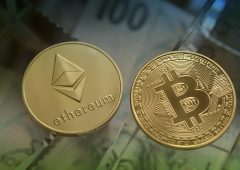Ethereum Investors Running Out of Buying Power – Can the Market Recover?
16.03.2025 22:00 2 min. read Alexander Stefanov
Ethereum investors who bought at higher price levels are now struggling to inject new capital into the market, raising doubts about the cryptocurrency’s ability to regain momentum, according to Chinese on-chain analyst Murphy.
Murphy shared data indicating that traders who entered between January and February 2025 did so at an average price of $3,200 to $3,500. A particularly large group accumulated roughly 1.66 million ETH, pushing their cost basis to $3,475. Despite Ethereum’s drop to $1,900, these investors refrained from buying more and currently hold 1.94 million ETH, bringing their average entry point down to $3,150.
Another group that bought in mid-February at prices between $2,600 and $2,800 has responded differently. As ETH slipped below $2,300, many began liquidating their holdings, leaving only two key price levels—$2,800 with 1 million ETH still in play and $2,630 where 850,000 ETH remains untouched.
With Ethereum continuing its downward trajectory, demand has weakened significantly, particularly after the price dropped below $2,000. On-chain data suggests that new buying interest has largely vanished at these lower levels.
Murphy notes that investors who previously accumulated ETH at higher prices have run out of purchasing power, having repeatedly tried to lower their cost basis. The $1,850 mark represents an important threshold, as many long-term holders who entered the market two years ago tend to repurchase at this level to mitigate losses, creating a potential support zone. However, if ETH fails to hold above $1,850, it could slide further, possibly testing $1,600 or even $1,250, where older accumulations from three years ago might provide the last major support.
For Ethereum to stage a meaningful recovery, investor confidence in its long-term value must be restored. Without a renewed belief in its potential, large holdings at $2,630, $2,800, and $3,150 could act as formidable resistance, making it difficult for ETH to regain upward momentum.
-
1
Ethereum Overtakes Bitcoin in Retail FOMO as Traders Shift Focus to Altcoins
17.07.2025 8:05 2 min. read -
2
Fartcoin Price Prediction: FARTCOIN Could Rise to $2.74 After Major Breakout
17.07.2025 16:01 3 min. read -
3
Binance to Launch 2 New Contracts with 50x Leverage: Everything You Need to Know
10.07.2025 12:00 2 min. read -
4
Standard Chartered Becomes First Global Bank to Launch Bitcoin and Ethereum Spot Trading
15.07.2025 11:00 1 min. read -
5
ProShares Ultra XRP ETF Gets Green Light from NYSE Arca
15.07.2025 19:00 2 min. read
Binance Launches New Airdrop and Trading Competition
Binance has officially launched a new airdrop event for Verasity (VRA) through its Binance Alpha platform, giving eligible users the chance to claim free tokens and compete for a massive prize pool.
XRP: What’s the Next Target After Bullish Breakout?
XRP has emerged from a months-long consolidation with renewed bullish momentum, reigniting trader interest in its next major price target.
Bitcoin Dominance Holds Firm as Altcoins Show Early Signs of Rotation
Despite recent gains across select DeFi and RWA tokens, Bitcoin continues to dominate the crypto landscape, with the Altcoin Season Index sitting at 43/100, according to today’s CoinMarketCap data.
XRP Eyes Next Target as Bullish Crossover Sparks 560% Surge
XRP is back in the spotlight after crypto analyst EGRAG CRYPTO highlighted a powerful historical pattern on the weekly timeframe—the bullish crossover of the 21 EMA and 55 SMA.
-
1
Ethereum Overtakes Bitcoin in Retail FOMO as Traders Shift Focus to Altcoins
17.07.2025 8:05 2 min. read -
2
Fartcoin Price Prediction: FARTCOIN Could Rise to $2.74 After Major Breakout
17.07.2025 16:01 3 min. read -
3
Binance to Launch 2 New Contracts with 50x Leverage: Everything You Need to Know
10.07.2025 12:00 2 min. read -
4
Standard Chartered Becomes First Global Bank to Launch Bitcoin and Ethereum Spot Trading
15.07.2025 11:00 1 min. read -
5
ProShares Ultra XRP ETF Gets Green Light from NYSE Arca
15.07.2025 19:00 2 min. read


